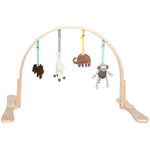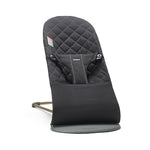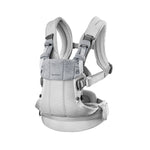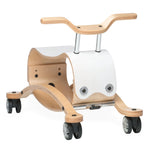Are you close to the finish line of your pregnancy? Your bags may already be packed and ready to go, or if planning a homebirth, your home supplies are all in order. You might find yourself slowing down physically while possibly experiencing symptoms such as belly, lower back, joint, and/ or hip pain, insomnia, swollen ankles, and heartburn. It’s also normal to be experiencing a mixed bag of emotions including excitement, stress, joy, anxiety, and curiosity about what life will be like once your little one is finally in your arms.
Now is a good time to pause and reflect back on the pregnancy journey, embrace the moments you have left without a newborn in the toe and also take advantage of this time to “nest” and wrap up any loose ends so you can give your full mental, emotional and physical energy towards transitioning into the epic newborn-postpartum stage.

If you have not already, begin to strategize how to get through the labor and childbirth process as it does take both physical and emotional strength to navigate. I highly recommend hiring a birth doula (like myself!) and taking a childbirth class that covers a multitude of topics so you will learn what to expect and reduce your fear of the unknown. Check out this awesome, full-spectrum online class by Mama Natural.
Alternatively, if you have scheduled a cesarean section, take time with your medical provider in advance to go over what the surgery will be like, including pre-op and post-op, and then you can better prep on some cognitive strategies below to get into the right headspace for a calm, confident birth.
Let’s go over some labor comfort techniques, grouped into different methods and beginning in the order that I feel is most helpful!
COGNITIVE STRATEGIES
What will you think about during labor and how can you think about labor pain differently?
Firstly, remember pain has a purpose. Watch this video for perspective.
Secondly, I want you to contemplate a time in your life that you have done something physically taxing or extremely painful and reminisce on what tactics helped you get through the experience. For example, what gets you through running a marathon? Do you mentally break down the run into sections and keep telling yourself to make it just a couple more minutes to the next mental marker? Do you visualize somewhere you feel safe or envision yourself completing a difficult task? Do you stick with the present moment or focus on your breath (breathe in relaxation and breathe out the tension) to keep you distracted? Many of these methods of mental stamina or distraction also work wonderfully while experiencing labor.
I also suggest downloading a meditation/ hypnobirthing app to get yourself in a good headspace for labor.
BODY POSITIONING

Body movement during labor is crucial. Your body may want to tense and freeze up when feeling pain or uncomfortable sensations but moving through each contraction actually stimulates receptors in the brain that decrease pain perception. Additionally, using upright, forward-leaning, and hip-opening positions will help open up the pelvis and drop the baby down. If you try to instinctually listen to your body, you will be surprised at how much your body will help guide you into getting into particular positions that will facilitate a smoother, faster birth too.
Here are a couple of ideas to try out:
- Standing and leaning your weight onto a chair, table, birth ball or wall while you sway your hips,
- Slow dancing with your partner / wrapping your arms around their neck and leaning on them for support,
- Walking or going up and down stairs,
- Sitting on a birth ball and rolling back and forth, in circles or crazy 8s. Buy a birth ball here,
- Getting on your hands and knees and rocking or swaying your hips side to side,
- Double hip squeeze technique: Place hands on the roundest, “meatiest” parts of her buttocks. Press those hands inward, towards each other, and toward her belly button. Here is a YouTube video that might be helpful for practicing,
- Counter-pressure technique: Place a palm or massage ball onto her sacrum – press down firmly during the entire contraction.
BREATHING
Patterned breathing during labor is essential as it not only helps increase the oxygen flow in both yourself and your baby but also releases endorphins - the body's own natural pain reliever - which eases your discomfort. Additionally, it can help you generally feel more focused and in control. Remember there's no single right way for moms to breathe during labor and delivery, so experiment beforehand and see what works best for you.

- Diaphragmatic/abdominal/belly breathing (for early labor)
- Organizing breath - inhale deeply, and exhale with a big sigh. I call it a “cleansing breath” as you intentionally release the tension on the exhale at the end of a big contraction.
- Slow breathing - inhale slowly through the nose, and exhale through your mouth.
- Box/square breathing – deep breathing that can slow down your breath and calm your nervous system. inhale for 4 seconds, hold the breath for 4 seconds, exhale for 4 seconds, then hold for 4 seconds.
- Variable/Pant-pant-blow breathing - breathe in lightly, taking shallow inhalations, and breathe out with long, relaxing exhalations.
GATE CONTROL THEORY
The theory is that your mind can only process so many sensations at once, so your brain will override the painful sensations if you focus your attention on other, more pleasant sensations. For example, when you hit your funny bone and immediately start rubbing the elbow and the new sensory input makes the pain suddenly go away.
When experimenting with this concept for labor, I tell my clients to use their five senses to plan what they will need or want within their birthing environment. Do you love scents? If so, make sure you bring an essential oil diffuser with your favorite oils to diffuse into the air or a favorite scented lotion or massage oil. Do you feel warm and fuzzy with a good ambiance? Plan to turn off those terrible fluorescent hospital lights and bring in some tea or string lights. Set up pictures of loved ones, crystals, and affirmation cards with mantras that give you mental strength. Also bring in things from home that make you feel comfortable such as your favorite sweatshirt, blanket, or pillow. Do you vibe well with some good music on? Create a couple of different playlists, such as upbeat music you would do cardio to, soft piano music to calm, or spa music to soothe your nerves. Do you crave physical touch? Be vocal to your partner or doula beforehand about desiring light touch and massage throughout. Also, consider cold packs and heating pads for potential pain relief. Hydrotherapy is another huge form of pain relief for childbirth, quite possibly one of the best, so try to plan on taking some showers or baths during early and active labor.
COUNTER IRRITANTS
The idea behind this is to create minor discomforts that you can control to distract you from the labor pain which you can’t control.
Here are some methods you could try:
- Birth Combs (clenching a cheap plastic comb in the palm of your hand so the teeth of the comb hit acupressure points in your hand)
- Acupressure points
- Sterile water injections
- TENS units
And remember, FIND YOUR RHYTHM! If that means using deep moans and vocal sounds during surges, rocking or swaying, using whatever tools that are working, repeating whatever affirmations or mantras in your head that are clicking best, use them! Good luck :)
FOLLOW @gentle_beginnings_doula
Looking for weekly pregnancy updates & advice from industry experts?
 ABOUT THE AUTHOR
ABOUT THE AUTHOR
Allison (“Aly”) Petrides is a married mother of three currently living in Fairfield County, Connecticut. She is a certified birth and postpartum doula who also works as a paralegal when not running to a birth! After experiencing three births within a five-year time span, Aly couldn’t help but recognize how overwhelming and difficult pregnancy, childbirth, and the postpartum period can be. Once she discovered doula work, she dove in head-first and is extremely passionate about empowering, educating, and assisting families. When she isn’t busy with doula clients or spending time with her husband and children, she can be found snuggling with a pet on her lap reading a true crime novel, taking a nature walk, or doing pilates.
















